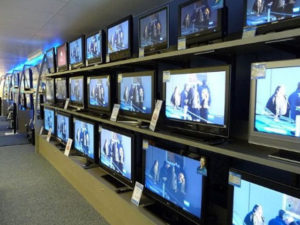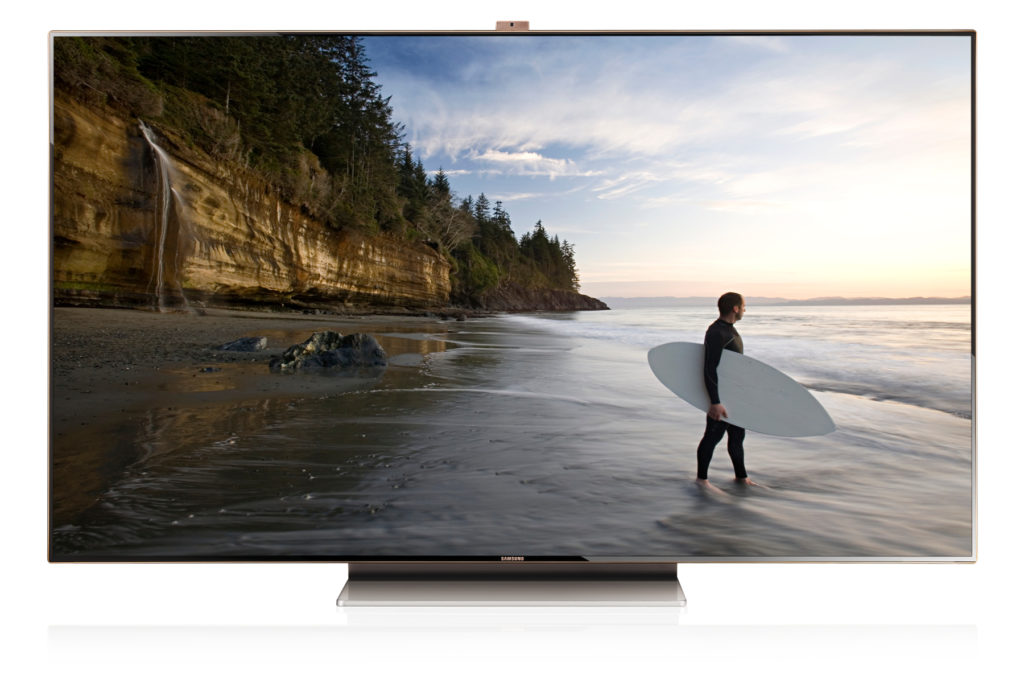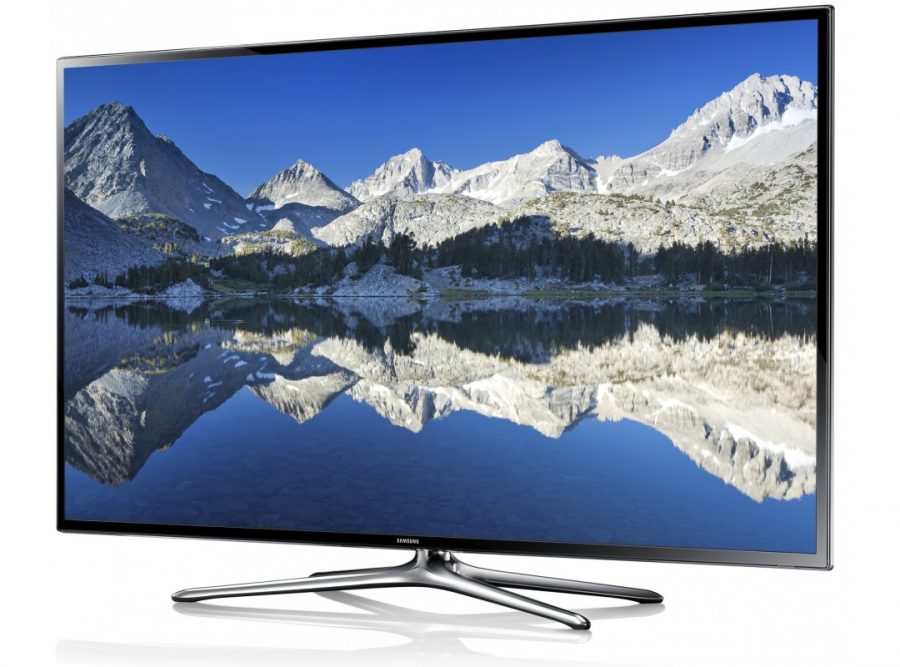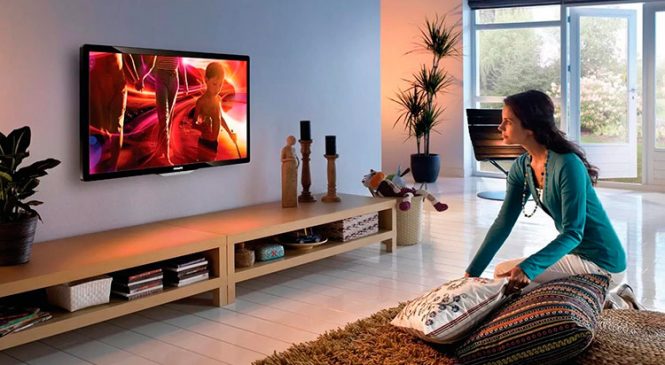 The average buyer is a person who is not interested in new items; he does not come to the store in search of a TV that has a certain form of remote control or has a rare, high-tech functionality. An ordinary potential owner of an LCD panel for watching TV wants to know how to choose an inexpensive, but a good TV in 2019, which will not turn your wallet inside out and will be convenient from all sides, functional to the best of your habits, show a very high-quality picture under any conditions. Among inexpensive TVs, you can choose a model that meets the above criteria. To do this, it is enough to follow some rules and evaluate the characteristics.
The average buyer is a person who is not interested in new items; he does not come to the store in search of a TV that has a certain form of remote control or has a rare, high-tech functionality. An ordinary potential owner of an LCD panel for watching TV wants to know how to choose an inexpensive, but a good TV in 2019, which will not turn your wallet inside out and will be convenient from all sides, functional to the best of your habits, show a very high-quality picture under any conditions. Among inexpensive TVs, you can choose a model that meets the above criteria. To do this, it is enough to follow some rules and evaluate the characteristics.
Content
Diagonal
On the market, you can choose from hundreds, thousands of models with a variety of diagonal sizes. But there is a simple fact. The best-selling TVs are 24, 32, 40 inches. The first are hung in the kitchen, the second and third have a wider range of applications.
In fact, there is a formula for calculating the optimal diagonal. If you simplify it to the limit, it will sound like this: the distance from the viewing point to the screen in centimeters is divided by three, then by 2.5, rounded up. In fact, a figure can be obtained that is not included in the size range of the best-selling or leading some personal rating TVs.
Prefer models with diagonals that make up the most popular "set", is for the following reasons:
- inexpensive, but a good TV with such a diagonal will offer many companies;
- the competition in the segment of selling sizes is very high, so each brand tries to establish the lowest possible price range of potential buyers, so to speak;
- The desire to occupy a significant market share leads to careful product control - a 24, 32, 40-inch TV is checked, reliable, and situations where two identical models have some kind of deviation in operation (which is found in devices with a large diagonal and small volume release);
- Conquering the user, companies will offer the maximum functionality that the cost framework of the product can allow.
And most importantly - a budget TV of the “standard” size range will certainly be equipped with almost all possible interfaces for connecting signal sources.
Picture quality
The second most important selection criterion, which should be evaluated if you want to purchase not the cheapest, but good TV, is the ability to create high-quality images. They depend on:
- type of matrix used;
- characteristics of the backlight system and general data of brightness, contrast;
- declared angles for optimal viewing.
Consider the characteristics of any LCD TV that should be taken into account.
Panel Types
Today on the market are devices with three types of matrices. These are TN-Film, IPS, OLED. Displays are listed, so to speak, in order of increasing price of finished products. Each matrix has its own characteristics:
- TN-Film works on the shutter principle. The matrix without a control signal is transparent. The color of a single point is created by darkening the display area, creating obstacles to the passage of light. Such a display is rather inert (the reaction time of the matrix is 5 ms and higher), it cannot create a deep black color, but a high-quality matrix guarantees perfectly white, problems of a "dirty screen" are present only with poor-quality backlight. Budget TVs from the “standard” size range are unlikely to have these problems. Models of receivers with such a matrix are quite cheap, when choosing it is worth stopping on devices with the shortest reaction time.
- IPS has the best color gamut and fast response.This display works "mirror" from TN-Film, in the absence of a signal, the screen points are perfectly black. This is the main advantage of technology. The reaction time for which the display forms a pixel is 1 ms or more. A modern TV set in 2019 with an IPS matrix has ceased to be an extremely expensive device, so you can find fairly inexpensive models that have excellent picture quality.
- OLED leads the technology ranking. Excellent gamut indicators and a reaction time that can be neglected are achieved — on the order of two thousandths of a second. The picture quality of LCDs of this class is amazing, but TVs are also notable for their high price. However, you can find a habitual model, for example, from a series from the LG brand, which offers a narrow functional set, but is equipped with an OLED matrix.

The display quality depends on the type of display. At the same time, during which the image is formed, plays a large role. At 5 ms or less, the eyes simply will not notice smoothing and other formation defects. But the higher the response time, the more annoying is the blurring of the picture during a sharp change of scene with small details, a drop in illumination, noticeable artifacts on the screen.
The last indicator by which a review and assessment of the matrices of the TV is done is the resolution and technical characteristic of the depth of field.
- If you select a model with a size of 24 or 32 inches, the HDR (HD Ready) format will be enough - 1366x768.
- A matrix of 40 inches or more is worth buying with a resolution of Full HD - 1920 × 1080 pixels.
- If you have enough money, you can buy a high-quality TV of the latest generation with a resolution of UltraHD 4R (3480x2160), but such a model is chosen by certain categories of users. For example, gamers with top-class video accelerators or fans of viewing content with maximum quality using special equipment.
A common criterion for any matrix is the depth of field. You can evaluate it reference, according to the documentation. The minimum requirement is 600: 1, but most budget models already offer an indicator of 1250: 1 and higher.
Backlight type
The comfort of viewing at different lighting levels will depend on how the backlight is organized. Do not chase as thin TV models as possible, even if their price is very attractive. Most likely, in such LCD displays, a system of contour arrangement of LEDs is used. This means that the TV will not be able to create a sufficiently high luminous flux. Watching TV shows in a brightly lit room will be uncomfortable.

The TV of the development of the past, 2019, the price of which does not seem sky-high, can be equipped with DirectLED backlighting, it is also called BackLight. Such a design scheme provides for uniform distribution of diodes over the entire surface of the matrix. This ensures stability, quality of lighting and its high overall flow.
The most attractive in terms of backlighting is a TV with an OLED matrix. It independently forms a luminous flux, each pixel, roughly speaking, has its own radiation source. Therefore, the brightness of the picture in the most modern LCD displays is excellent, this is especially noticeable when displaying small image details.
To view the broadcasts for pleasure, you will need to evaluate the passport characteristics of the TV. The necessary margin of brightness is needed for bright lighting conditions. The minimum value is 450 cd / m2, it is recommended to dwell on models having a minimum of 650 cd / m2. Most modern TVs meet this criterion.
Viewing angles and coverage
The matrix may be ideal in all respects, but the outer coating will easily ruin everything. The viewing angle is critical, especially for large diagonals. Many manufacturers claim 180 degrees, but in practice the color deviation is very noticeable. Therefore, a visual assessment of the model is required. You should consider a TV whose viewing angle is honest.In the form of numbers 172 or 178. In most cases, such data in the documentation indicate a thorough assessment of the characteristics of a particular model.
Coating and its quality also play a large role. Anti-glare works great and is preferable in rooms with bright lighting. The screen will have less side glare and spurious reflections, which will significantly increase viewing comfort. On the other hand, in darkened rooms or with controlled sources or diffused lighting, screens with a glossy finish that do not distort colors in any way, do not lose small details due to interpolation during light diffusion, show excellent results.

Connecting devices, installation
The answer to the question, how much is the cheapest TV, always includes its scope. Modern models can work with external drives, be used as a monitor, allow the connection of a variety of playback and recording devices. Therefore, before going to the store, you should carefully think about what exactly the TV should be “able to”.
The standard recommended set includes: antenna port, for PCMCIA, HDMI, USB, coaxial audio-video, 3.5 mm audio output. This is enough to meet basic standard needs. You can buy an expansion card and watch satellite channels without a receiver, connect any players, including old video recorders, using a USB flash drive you will have access to your home collection of pictures or movies downloaded from the Internet. It is also easy to use the TV with headphones without disturbing others.
More detailed criteria may include the presence of a LAN interface, DNLA support, the presence of SCART, digital audio ports, D-Sub VGA for connecting a computer. The list of available connections can be very extensive, so you should clearly know what is required. The complexity of the hardware platform and, consequently, the cost of the device will depend on this in some way.
Another assessment is made in terms of the convenience of placing a TV. If you plan to install it on a table or stand, a stand with the ability to be fixed to the surface will be useful - this option will protect you from accidentally tipping over an expensive product.
It is important to know how to choose a TV with mount that offers the required freedom of action and convenience. If the TV complies with the VESA standard, it can be hung on vertical ceiling structures, rotated in two degrees of freedom, with a wide amplitude of displacement from the wall and to the sides. Simpler models include flat mounts. They only allow you to tilt the display surface, no more.
The next thing you need to evaluate if you plan to hang the TV on the wall is the location of the ports. In fact, at a small distance from the wall to the case, it is sometimes difficult to operate with connection cables. Therefore, a model in which the ports are located with side outputs is preferable.

Conclusion
There are a number of individual assessment criteria. Someone will prefer an inexpensive version of 3D technology, a TV with a passive circuit is not characterized by a noticeably high price. Think about the need for SmartTV. In fact, today the option of buying a separate set-top box is more attractive: the price of a simple TV and a functional supplement will be much lower than for a model with an integrated smart system.
All other parameters - sound quality, overall impression - should be evaluated individually for each model. It is worth remembering the features of different brands. LG will offer simple, fairly reliable models. Cheaper and often better in terms of performance are Chinese brands, as well as products of Japanese second-tier companies (TOSHIBA, SUPRA).
Samsung products are characterized by a higher price, but the number of technical innovations in TVs is higher. Separate line we can mention Philips, which traditionally uses proven and reliable hardware solutions, as well as Sony Corporation, which in addition to its name guarantees close to maximum technical parameters of LCD displays and electronics.